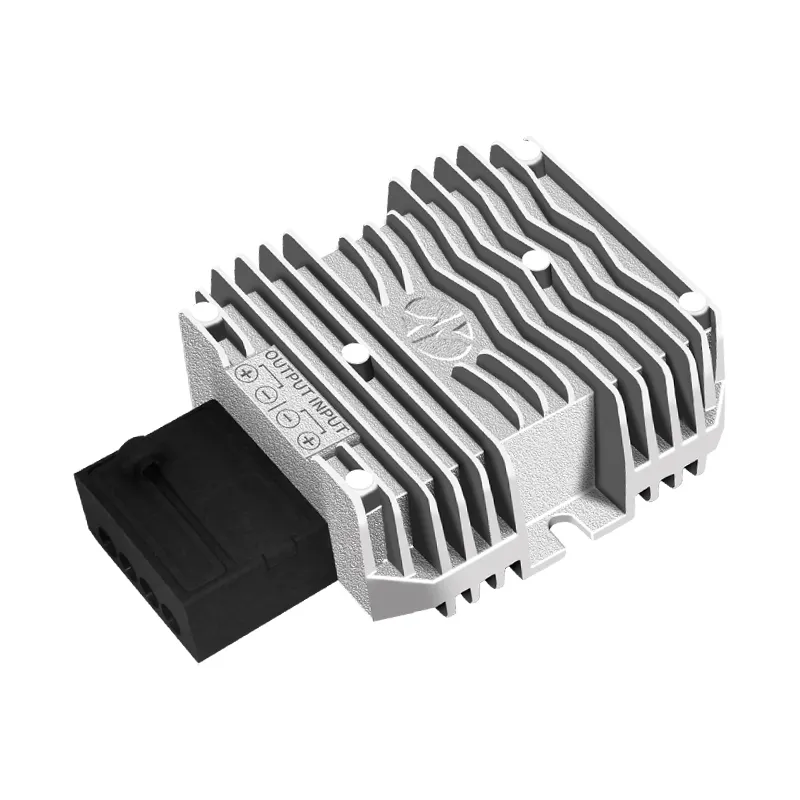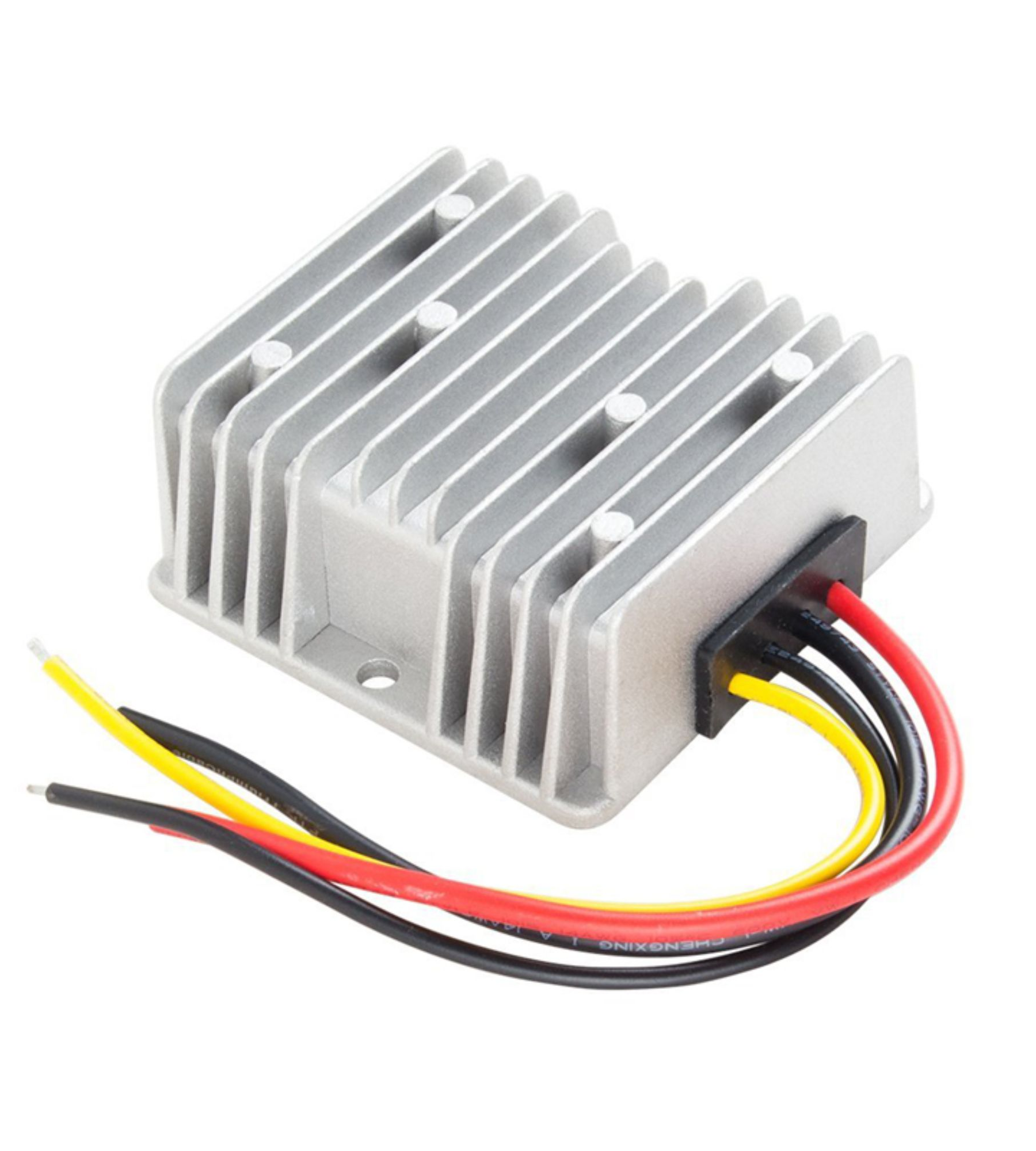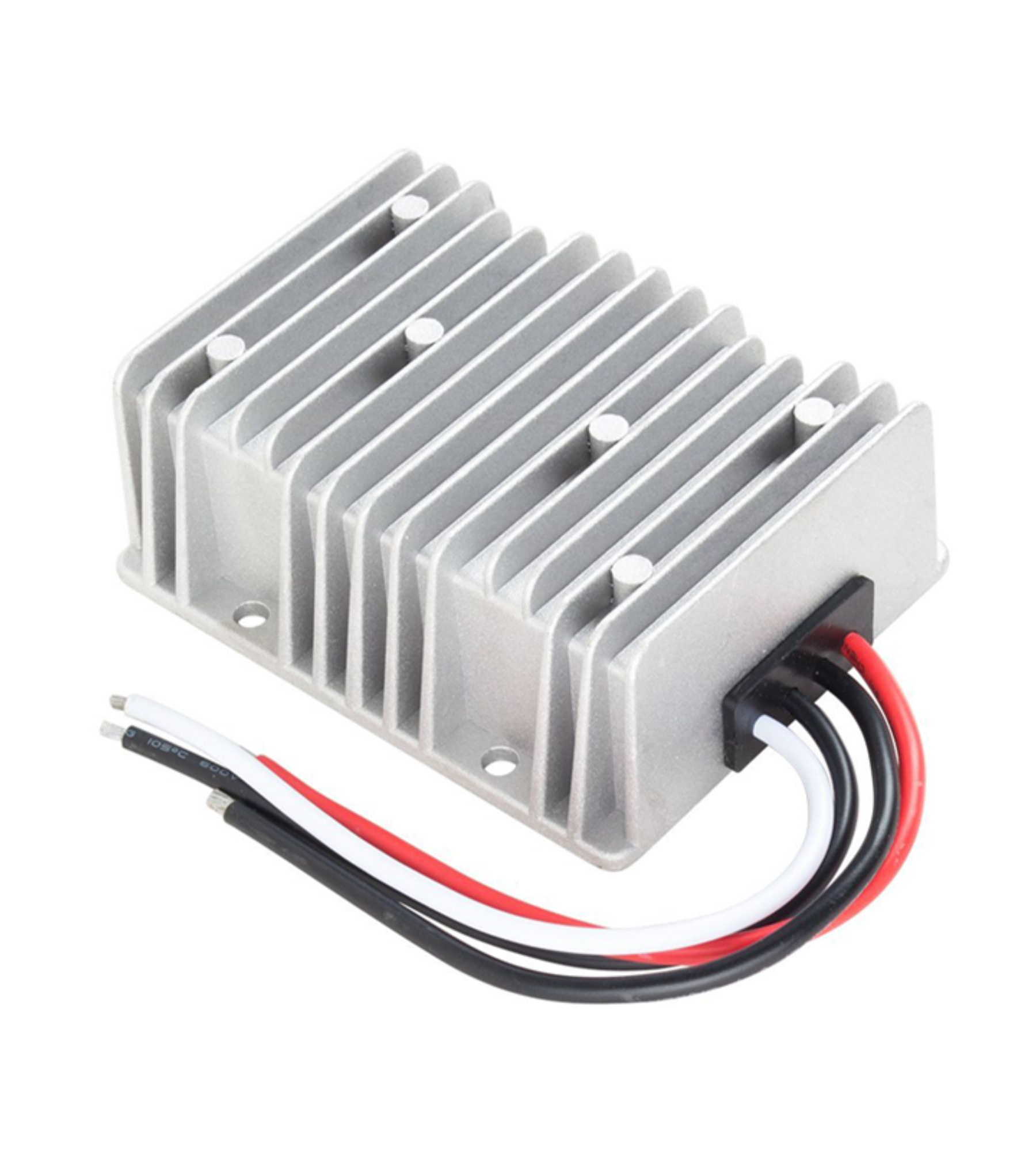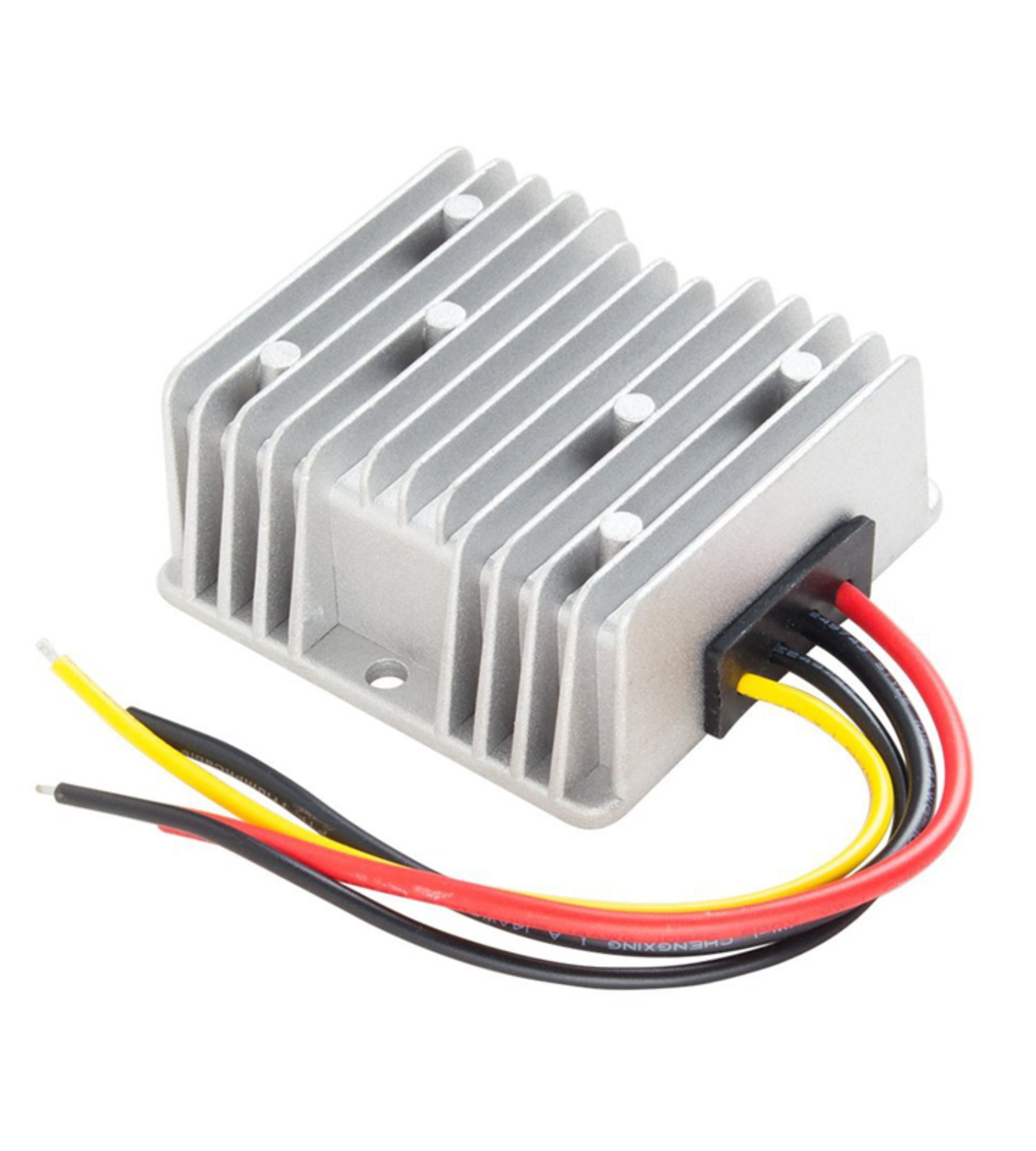Chargeur DC-DC
Charge efficacement les appareils en déplacement, garantissant une alimentation électrique ininterrompue.

Découvrez la solution ultime pour recharger vos appareils : le chargeur DC DC. Ce chargeur a tout ce qu'il faut ; un large choix, une gamme de prix et des avis favorables. Que vous soyez en voyage ou simplement chez vous, ce chargeur est bien plus efficace que les autres grâce à ses performances et sa fiabilité en matière d'alimentation électrique. De plus, il intègre une technologie de charge rapide qui permet de charger vos appareils plus vite qu'avec des chargeurs standards tout en garantissant la sécurité pendant le processus de charge. Adieu donc la lenteur de chargement avec nos chargeurs DC-DC, qui apportent également du confort dans notre quotidien. Il peut être emporté n'importe où grâce à sa taille compacte, mais est aussi conçu pour durer longtemps même avec un usage intensif. Ne choisissez pas un chargeur ordinaire parmi tous ceux disponibles sur le marché aujourd'hui, optez pour celui-ci et voyez quelle différence il fait dans la vie de tous les jours ! Choisissez toujours le meilleur, adoptez maintenant le chargeur DC-DC pour une alimentation sans faille dès que nécessaire !

Lorsqu'il est question d'optimisation de la puissance, rien ne compte plus que l'efficacité. C'est précisément là que le module DC/DC de Szengao entre en jeu. Il établit un tout nouveau niveau en matière d'économie d'énergie grâce à une conception précise et originale. Le module DC/DC de szwengao utilise diverses techniques telles que la rectification synchrone ou le mode veille à faible consommation, entre autres, afin de réduire les pertes d'énergie tout en augmentant l'efficacité de conversion, de sorte que chaque watt compte lors de l'alimentation d'appareils électroniques sensibles ou même de machines industrielles, réduisant ainsi les coûts d'exploitation ainsi que la pollution environnementale.

Avec l'arrivée d'appareils électroniques plus petits et plus compacts, l'espace est devenu une ressource rare dans de nombreuses applications nécessitant une conversion d'énergie. Szengao a très bien compris ce besoin lorsqu'il a conçu son dernier module de convertisseur DC-DC, qui se distingue par une haute densité de puissance ainsi qu'une gestion thermique efficace, permettant ainsi des performances maximales dans des espaces limités sans nécessairement compromettre aucun des deux aspects, c'est-à-dire l'échange entre taille et efficacité. Que ce soit pour le développement d'électronique portable ou l'intégration de mécanismes d'économie d'énergie dans des espaces serrés comme ceux que l'on trouve dans les voitures ou même dans les avions, le module de conversion DC/DC de szwengao reste un choix idéal grâce à sa compacité soutenue par des capacités améliorées de dissipation de chaleur pour une utilisation optimale dans de telles conditions exigeantes.

Dans un monde actuel où tout va vite et où les gens veulent que tout soit fait rapidement, la fiabilité devient un aspect essentiel. Les ingénieurs du monde entier comptent sur le DCDM de szwengao pour son excellent historique de fiabilité couplé à des niveaux de performance élevés qui ont été prouvés de nombreuses fois grâce à des tests approfondis utilisant uniquement des matériaux de première qualité lors du processus de fabrication, garantissant ainsi une alimentation en tension stable quelles que soient les conditions environnementales dans lesquelles il opère, même si elles sont extrêmes, permettant ainsi aux concepteurs de se concentrer davantage sur leur créativité plutôt que de s'inquiéter des taux de défaillance associés à d'autres produits similaires disponibles sur le marché aujourd'hui.

La technologie évolue rapidement de nos jours ; par conséquent, l'adaptabilité devient incontournable à tous les niveaux, surtout lorsqu'il s'agit de gadgets électroniques tels que les téléphones mobiles et autres. Il faut pouvoir ajuster ses besoins en puissance en conséquence, sans nécessairement avoir un appareil distinct pour chaque besoin spécifique, mais plutôt utiliser un produit capable de remplir plusieurs fonctions à la fois, comme szwengao l'a fait ici – sa dernière création permet une plage de tension d'entrée étendue ainsi que des réglages de tension de sortie ajustables, rendant cet outil particulier applicable dans différents contextes, allant de la personnalisation de circuits simples aux conceptions modernes, ou même à la mise à niveau des systèmes existants, qu'ils soient de petite ou grande envergure, en fonction de ce qui convient le mieux aux spécifications concernant la taille, la disponibilité, etc.

fabricant de systèmes d'alimentation électrique depuis 10 ans. NOUS CONTRIBUONS À VOTRE EXPANSION SUR LE MARCHÉ.
Shenzhen Wengao Electronic Co., Ltd vise à devenir le meilleur fournisseur de solutions d'alimentation. Nous concevons et produisons des alimentations AC-DC, des convertisseurs DC-DC, des systèmes de chargeur de batterie ainsi que des alimentations haute tension pour les clients internationaux. Dans notre gamme de produits, nous disposons de plus de 500 modèles qui peuvent satisfaire divers besoins, y compris, sans s'y limiter, l'énergie alternative, l'équipement industriel et l'automatisation, les télécommunications, les véhicules robotiques et le transport, le médical, etc. szwengao maîtrise de nombreuses applications avec un système de support de service réactif ; aujourd'hui, il a établi des partenariats avec plus de 130 pays tels que les États-Unis, le Japon, l'Europe, l'Australie, le Canada, la Corée, etc.
Charge efficacement les appareils en déplacement, garantissant une alimentation électrique ininterrompue.
Diminue en toute sécurité les niveaux de tension, évitant ainsi les dommages aux équipements sensibles.
Convertit l'énergie efficacement, permettant une compatibilité sans faille entre les appareils.
Maintient une sortie de tension stable, protégeant les appareils électroniques des fluctuations.
Nous disposons de différents types de modules DC/DC tels que les modules de montée en tension, de baisse en tension, buck-boost et isolés, qui sont utilisés pour convertir différentes tensions.
Oui, nous pouvons répondre à vos commandes en gros car nous les produisons à grande échelle en tant que fabricants et grossistes. Faites-nous savoir vos besoins.
Bien sûr ! Nous pouvons personnaliser nos produits selon vos besoins. Notre équipe est capable de développer un module adapté à votre tension de sortie ou à toute autre spécification que vous pourriez avoir en tête.
La période moyenne d'expédition dépend principalement du nombre et de la complexité des unités demandées, mais généralement, nous faisons de notre mieux pour livrer le plus rapidement possible. Vous pouvez donc nous contacter pour obtenir des estimations plus précises des délais de livraison en fonction de la taille de votre commande, etc.
Oui, tous nos modules sont conçus et fabriqués conformément aux normes reconnues régissant les systèmes d'assurance qualité dans ce secteur, tout en répondant ou dépassant les attentes en matière de performance et en assurant la sécurité des utilisateurs tout au long de leur durée de vie. Ainsi, nous veillons toujours à être en pleine conformité avec les règlements applicables ainsi que les certifications.
Bien sûr ! Nous disposons d'une équipe composée d'experts qui peuvent vous fournir une assistance technique à chaque étape, y compris le processus d'installation, la résolution de problèmes ainsi que l'optimisation, alors n'hésitez pas à poser toutes vos questions concernant ces aspects.
